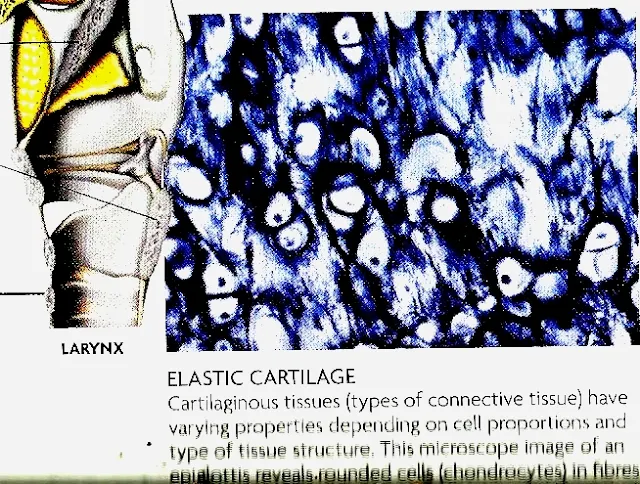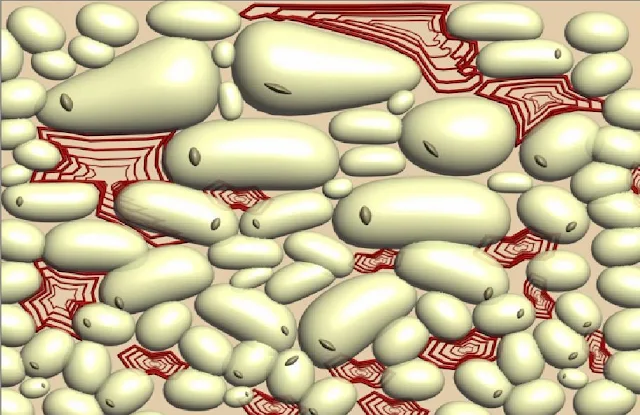 |
| Tissue |
TISSUE:
 |
| Different Cell Types of Body |
The tissues of the body consist of large numbers of cells and they are classified according to the size,shape,and functions of these cells.There are 4 main types of tissue.They are:
1) Epithelial tissue or epithelium
2) Connective tissue
3) Muscle tissue
4) Nervous tissue
 |
| Different Epithelium |
COLUMNAR EPITHELIUM:
This is formed by a single layer of cells, rectangular in shape, on a basement membrane.It is found lining the organs of the alimentary tract and consists of a mixture of cells; some absorb the products of digestion and others secrete mucus.
Mucus is a thick sticky substance secreted by specialized columnar cells called goblet cells .
CUBOIDAL EPITHELIUM:
This consist of cube-shaped cells fitting closely together lying on a basement membrane.It forms the kidney tubules and is found in some glands.Cuboidal epithelium is actively involved in secretion, absorption and excretion
CILIATED EPITHELIUM:
Cilia are microscopic, hair-like processes on the free surface of columnar epithelial cells lining certain passageways,e.g. uterine tubes and airways, where their wave-like motion propels materials one-ways.In the uterine tubes the cilia propel ova towards the uterus and in the respiratory passages they propel mucus towards the throat.
 |
| Loose Connective Tissue |
LOOSE (AREOLAR) CONNECTIVE TISSUE:
This is the most generalized type of connective tissue. The matrix is semisolid with many fibroblast and some fat cells. mast cells and macrophages widely separated by elastic and collagen fibers.
 |
| 3D Picture of Loose Connective Tissue Created by Me (Manash Kundu) |
It is found in almost every part of the body providing elasticity and tensile strength. It connects and supports other tissues for example:
 |
| Different Blood Cells |
1) Under the skin
2) Between muscles
3) Supporting blood vessels and nerves
4) In the alimentary canal
5) In glands supporting secretory cells
 |
| Dense Connective Tissue |
Dense connective tissue,
also called dense fibrous tissue, has fibers as its main matrix element.Dense connective tissue is mainly composed of collagen type I. Crowded between the collagen fibers are rows of Fibroblast fiber-forming cells, that manufacture the fibers. Dense connective tissue forms strong, rope-like structures such as tendons and ligaments. Tendons attach Skeletal to bones; ligaments connect bones to bones at joints.
 |
| Spongy Bone Tissue |
Ligaments are more stretchy and contain more elastic fibers than tendons. Dense connective tissue also make up the lower layers of the skin (dermis), where it is arranged in sheets.
 |
| Elastic Cartilage tissue |
ELASTIC FIBROCARTILAGE:
This flexible tissue consists of yellow elastic fibers lying in a solid matrix. The chondrocytes lie between the fibers.
 |
| 3D Picture of Elastic Fibrocartilage Created by Me (Manash Kundu) |
It provide support and maintains shape of e.g. the pinna or lobe of the ear, the epiglottis and part of the tunica media of blood vessel walls.
 |
| Adipose Tissue |
ADIPOSE TISSUE:
Adipose tissue consists of fat cells containing large fat globules, in a matrix of areolar tissue. There are 2 types white and brown.
 |
| 3D Picture of Adipose tissue Created by Me (Manash Kundu) |
1) White adipose tissue: This makes up 20 to 25% of body weight in well nourished adult.
2) Brown adipose tissue: This is present in newborn. It has a more extensive capillary network than white adipose tissue.
 |
| Smooth Muscle Tissue |
Muscle Tissue:
Muscle tissue is able to contract and Relax, providing movement within the body and of the body itself. Muscle contraction requires an adequate blood supply to provide sufficient oxygen, Calcium and nutrients and to remove waste products.
 |
| Skeletal Muscle Tissue |
There are 3 types of specialized contractile cells also known as fibers ;
 |
| 3D Picture of Muscle Tissue Created by Me (Manash Kundu) |
1) Skeletal Muscle
2) Smooth Muscle
3) Cardiac Muscle
Nerve Tissue:
Microscopic Image Showing Glial Cells That support message-conducting nerve cells (Neurons) in nerve tissue, and are known as neuroglia. Among the Astrocytes (Light green spider like forms) .These supply neurons with Nutrients.
 |
| Nerve Tissue |
























 Online Movies
Online Movies
No comments:
Post a Comment